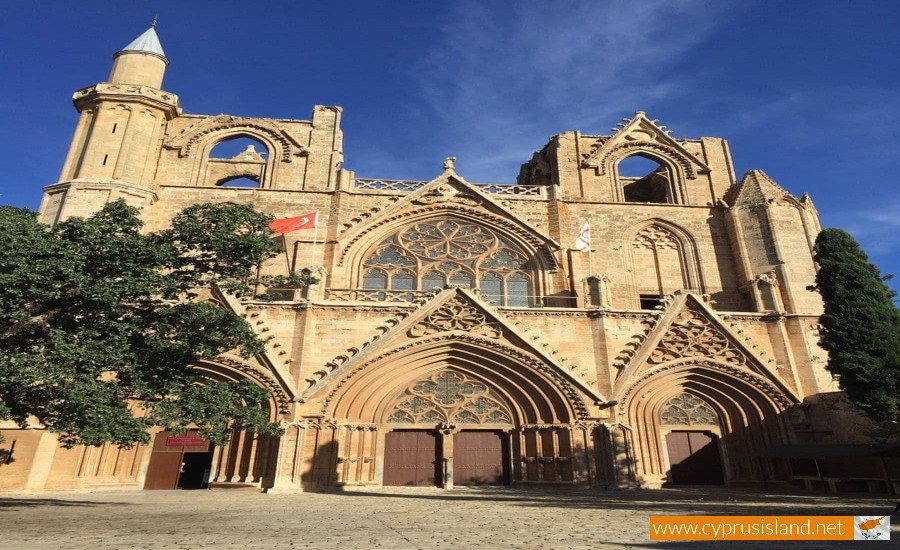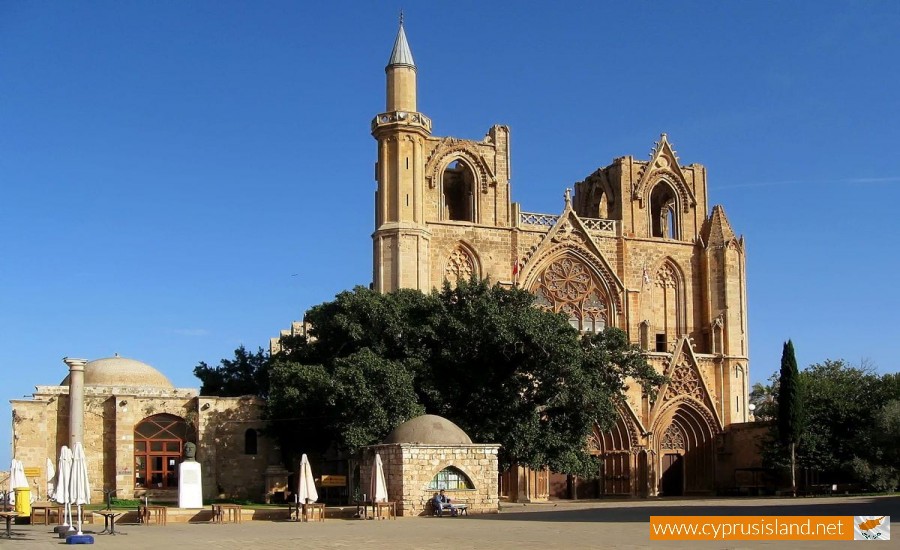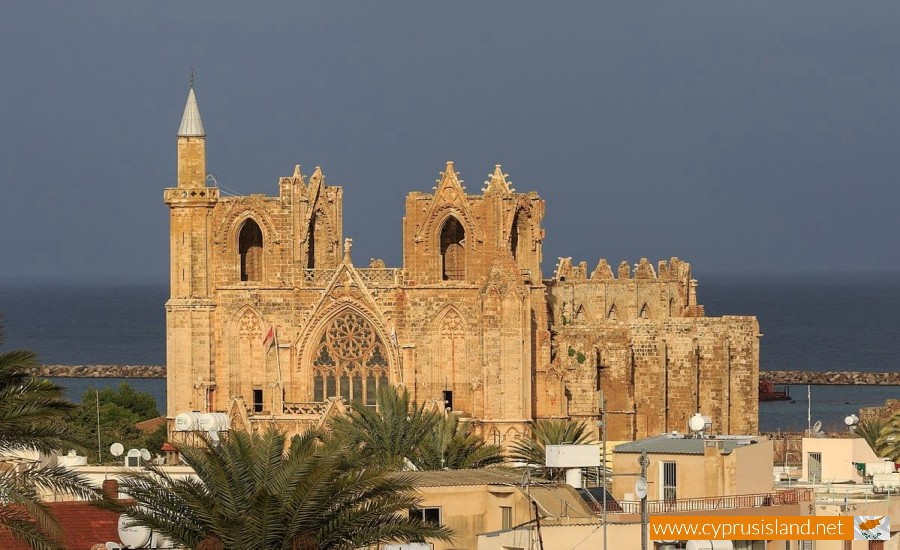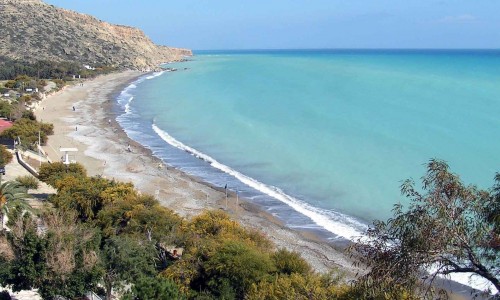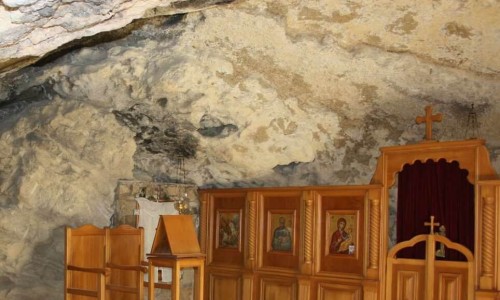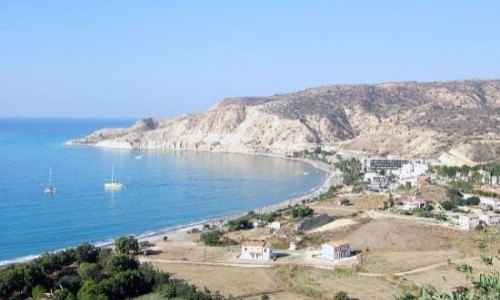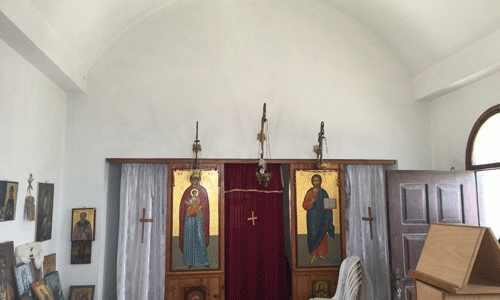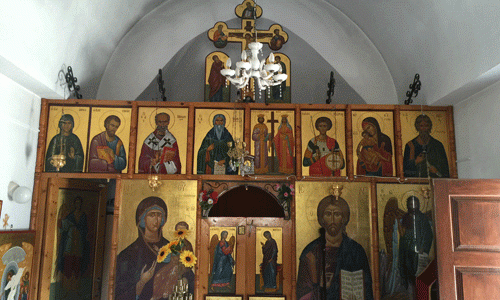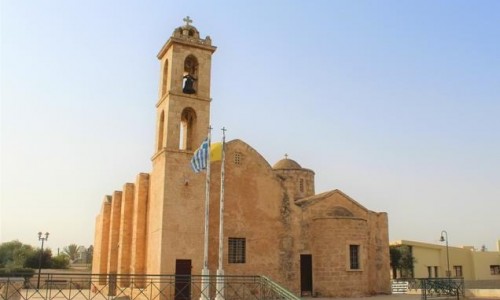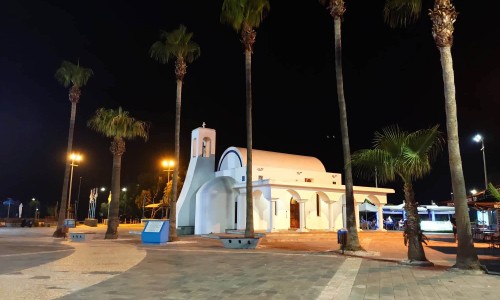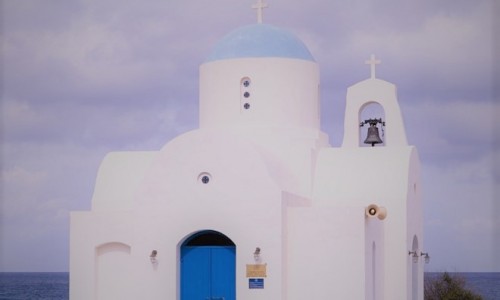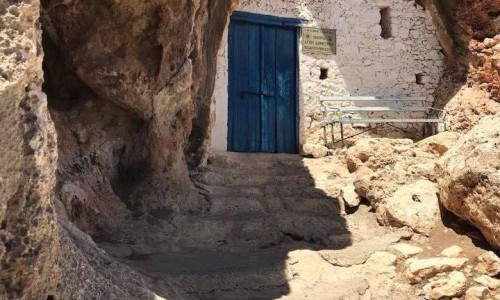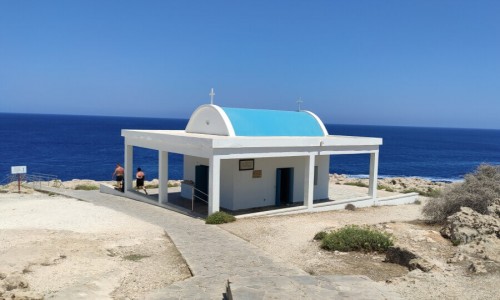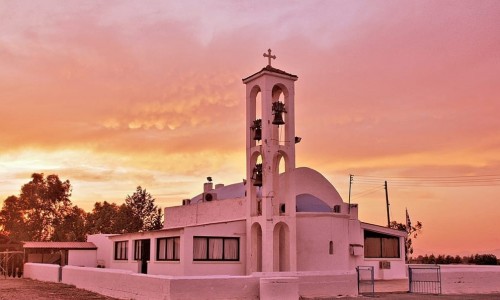Agios Nikolaos Cathedral - Ammochostos
In the timeless maze of the old walled city of Famagusta, one monument stands above all others, both in scale and in significance—the majestic Agios Nikolaos Cathedral, now known as the Lala Mustafa Pasha Mosque. With its dramatic Gothic architecture, ancient limestone walls, and storied past, this iconic building is more than just a place of worship. It’s a layered historical landmark that tells the tale of Cyprus itself—of empires, religions, battles, and the enduring beauty of human craftsmanship.
A Glorious Beginning in the Age of Crusaders
Construction of Agios Nikolaos Cathedral began around 1298, during the rule of the French Lusignan dynasty, who governed Cyprus as a Christian crusader kingdom following the Third Crusade. The Lusignans envisioned Famagusta as the "Jewel of the East," a wealthy, powerful port city to rival any in Europe or the Levant. This cathedral was to be its spiritual crown.
Built in the High Gothic style imported from France, the cathedral was designed to echo the great churches of the Lusignans’ homeland—particularly Reims Cathedral, where French kings were crowned. It is no coincidence: the rulers of Cyprus also held the title of King of Jerusalem, and they wanted their coronation church to reflect that sacred authority.
The cathedral was officially consecrated in 1326, becoming the seat of the Latin Archbishop of Famagusta and the most important Catholic cathedral in Cyprus. Over time, it became a place not only of worship, but of royal ceremony, diplomacy, and civic pride.
Architectural Splendor: Gothic Majesty Meets Mediterranean Light
The architecture of Agios Nikolaos Cathedral is nothing short of breathtaking. Though weathered by centuries of siege, earthquake, and time, it remains one of the most intact examples of Gothic architecture in the eastern Mediterranean.
Key features include:
- Twin towers flanking the entrance—though partially ruined today, they once housed bells and overlooked the entire walled city.
- A majestic rose window above the portal, carved with delicate stone tracery that filters light into the interior.
- Flying buttresses, pointed arches, and ribbed vaults—hallmarks of Gothic engineering, allowing for soaring ceilings and open space.
- A three-aisled nave, once filled with altars, frescoes, and carved stone tombs.
What makes the building unique is how these European features were adapted to local materials and climate. The soft, honey-colored Cypriot limestone gives the building a warm glow at sunrise and sunset. Large windows once held stained glass, casting colored light across the marble floors.
The cathedral is slightly smaller than its European cousins but still impressive in scale. And while its interior is now austere, one can imagine its former grandeur—pillars wrapped in silk, icons gleaming in candlelight, and choirs echoing through the vaulted nave.
Coronations and Royal Ceremonies
During the Lusignan era, kings of Cyprus were crowned here with the crown of Jerusalem. The symbolism was powerful: though the Crusaders had lost Jerusalem itself, Cyprus was seen as a continuation of their Christian kingdom.
These ceremonies were lavish affairs attended by nobles, knights, bishops, and foreign envoys. The cathedral was also the site of royal funerals, state masses, and events that linked Famagusta to the larger world of Christian Europe and the Mediterranean.
The cathedral stood not just as a religious building, but as a statement of political power and cultural identity.
A New Era: From Cathedral to Mosque
The fate of Agios Nikolaos Cathedral changed forever in 1571, when the powerful Ottoman Empire captured Famagusta after a brutal siege that ended the Venetian defense of Cyprus. Following the city’s fall, the Ottomans converted major churches into mosques, and Agios Nikolaos became the Lala Mustafa Pasha Mosque, named after the Ottoman commander.
- The Christian symbols—crosses, altars, statues—were removed.
- A minaret was added on the northwest corner to call the faithful to prayer.
- The interior was reoriented toward Mecca, with a mihrab and simple Islamic decor.
- The floor was covered with carpets, and the pews removed.
Despite this transformation, the Ottomans did not destroy the building. In fact, its Gothic shell was preserved, allowing the structure to continue its life as a sacred space under a different faith.
This act of preservation, even during a time of conquest, is part of what makes the building so remarkable today. It stands as a rare fusion of European Gothic and Islamic traditions, layered into a single living monument.
Living History in Namık Kemal Square
The cathedral-mosque is the spiritual and architectural centerpiece of Namık Kemal Square, the vibrant main plaza of Famagusta’s old city. Surrounded by medieval ruins, Ottoman-era buildings, and a scattering of cafés and shops, the square is a blend of centuries.
Nearby sites include:
- The Venetian Royal Palace ruins, once the seat of governance.
- The Othello Tower and Citadel, a fortress linked to Shakespeare’s tragedy.
- The Sea Gate, where traders and pilgrims once entered the city.
As you walk through the square today, you'll find children playing in the shade, elders sipping tea under the trees, and tourists gazing up at the towering façade of the cathedral. It remains a gathering place, just as it has been for over 700 years.
Visiting Today: What to Know
The Lala Mustafa Pasha Mosque is still an active mosque, but it’s open to visitors of all backgrounds, provided respectful behavior and modest dress are observed. Women are encouraged to cover their shoulders and knees; headscarves are typically offered at the entrance if needed.
- Entry is usually free, and photography is allowed unless otherwise posted.
- The best time to visit is early morning or late afternoon, when the stone glows and the crowds are fewer.
- If you’re lucky, you may hear the call to prayer ring out from the minaret, echoing across the old city.
- Don’t miss the chance to circle the exterior, where you can admire carvings, portals, and weathered medieval stonework.
A Monument to Cyprus’s Layered Identity
Agios Nikolaos Cathedral is not just a historical site—it’s a symbol. A symbol of Cyprus’s multicultural past, its religious transitions, its enduring architecture, and its place at the crossroads of East and West.
To Greek Cypriots, it is a lost cathedral, a memory of Christian Famagusta.
To Turkish Cypriots, it is a cherished mosque, woven into centuries of spiritual life.
To visitors, it is a powerful reminder that sacred spaces can evolve, yet still retain their soul.
In a land where histories often clash, Agios Nikolaos Cathedral stands not just as a relic of the past, but as a beacon of resilience, beauty, and continuity.


